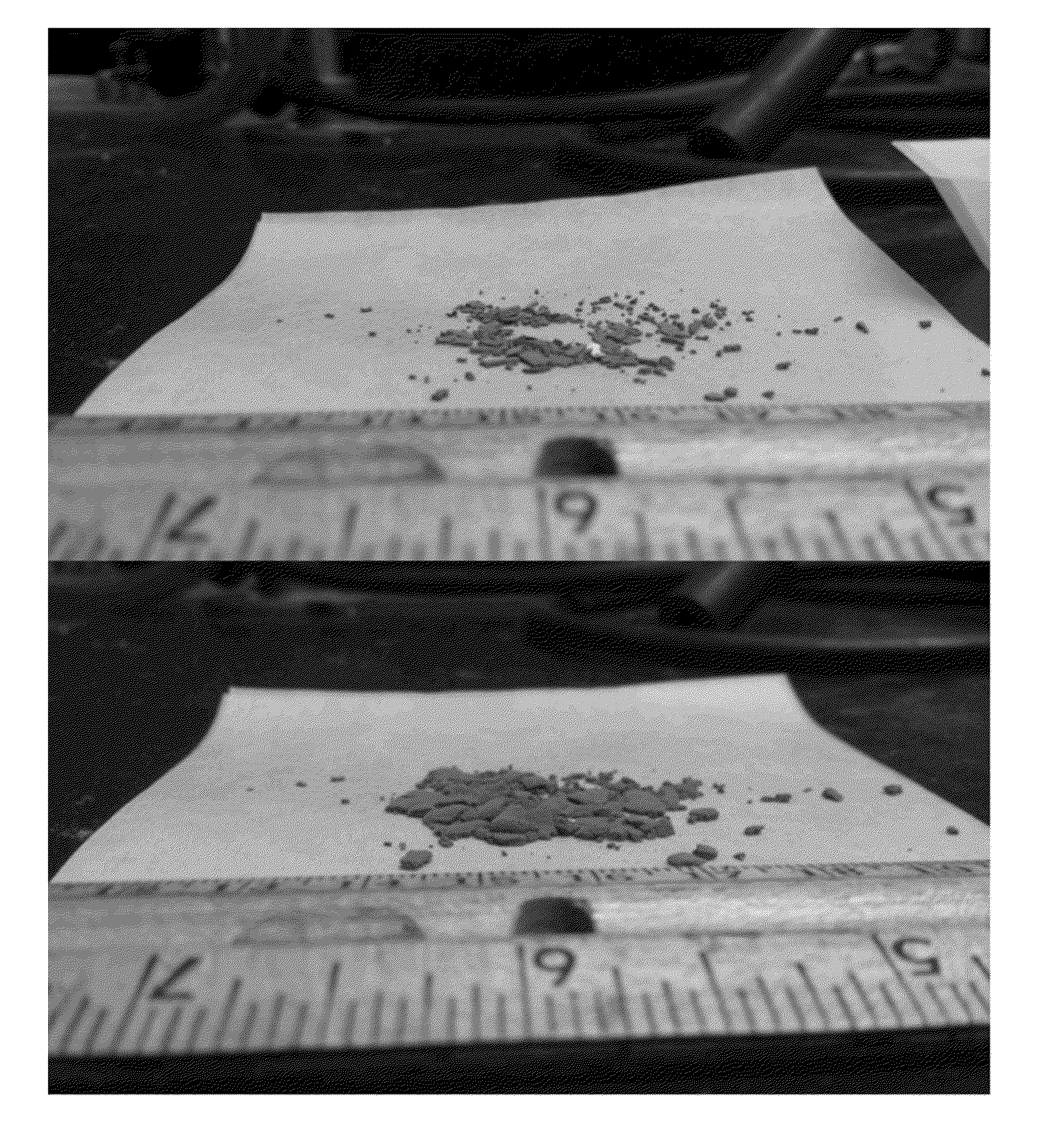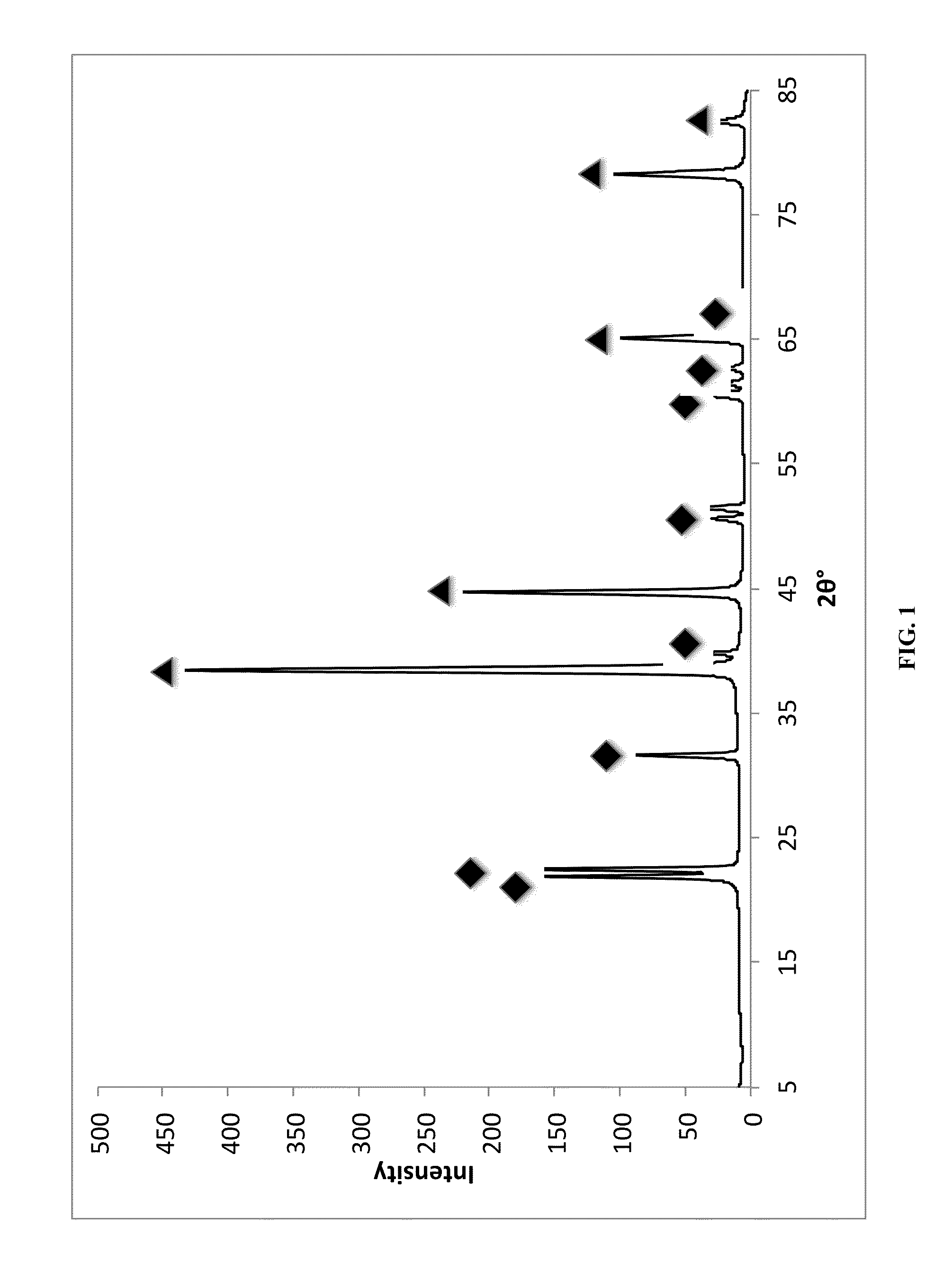Novel Hydrogen-Evolving Polymer-Capped Aluminum Nanoparticles, Composites, and Methods of Synthesis Using Lithium Aluminum Hydride
a lithium aluminum hydride and hydrogen-evolving technology, applied in the field of new nanomaterials, compositions, and methods of synthesis, can solve the problems of high reactiveness of aluminum nanoparticles in ambient atmospheric conditions and water, difficult handling of aluminum halides, and high cost of aluminum alane production compared to other aluminum sources, so as to increase the energy content of the fuel
- Summary
- Abstract
- Description
- Claims
- Application Information
AI Technical Summary
Benefits of technology
Problems solved by technology
Method used
Image
Examples
example 1
Materials and Methods
[0053]Reagents and Materials.
[0054]Lithium aluminum hydride (LiAlH4, powder, reagent grade, 95%), titanium(IV) isopropoxide (99.999% trace metals basis), 1,7-octadiene (98%), 1,9-dec adiene (98%), 1,13-tetradecadiene (90%), toluene (anhydrous, 99.8%), tetrahydroforan (THF, anhydrous, ≧99.9%, inhibitor-free), and methanol (anhydrous, 99.8%) were all purchased from Sigma Aldrich. Anhydrous diethyl ether was purchased from J. T. Baker. Toluene and THF were distilled over sodium metal and potassium metal, respectively, to remove any trace oxygen and water. Diethyl ether and methanol were distilled over 4 Å molecular sieves. All alkenes were subjected to numerous freeze-pump-thaw cycles to remove any oxygen present. Titanium(IV) isopropoxide was dissolved in toluene to create a 0.0334M solution. Both LiAlH4 and Ti(OiPr)4 were stored under argon atmosphere to prevent oxygen / water exposure.
[0055]Synthesis.
[0056]All reactions were performed on a Schlenk line under argon...
example 2
Experimental Results
[0067]Al NPs are formed from the decomposition of LiAIH4 in the presence of Ti(OiPr)4 at 85° C. in either THF or diethyl ether. In addition to the Al NPs, lithium alanate, Li3AIH6, NPs are co-formed (˜50 weight % aluminum: lithium alanate NPs) in the LiAlH4 decomposition reaction. Dienes, such as 1,7-octadiene, 1,9-decadiene, and 1,13-tetradecadiene, were used as passivating agents since the uncapped particles were pyrophoric in air.
[0068]Powder X-ray diffraction (PXRD, FIG. 1) of the resulting grey powder shows the presence of 2 different phases in the resulting sample: face-centered cubic aluminum (fcc Al) and monoclinic lithium hexahydridoaluminate (Li3AlH6).
[0069]Estimated NP core sizes and d-spacings from PXRD analysis are presented in Table 1. The crystalline Al NP cores were ˜29 nm in diameter as determined from Scherrer analysis of the (111), (200), (220), and (331) diffraction peaks. The Li3AlH6 particles also appear to be nanocrystalline with NP core di...
PUM
| Property | Measurement | Unit |
|---|---|---|
| diameter | aaaaa | aaaaa |
| diameter | aaaaa | aaaaa |
| 2θ | aaaaa | aaaaa |
Abstract
Description
Claims
Application Information
 Login to View More
Login to View More - R&D
- Intellectual Property
- Life Sciences
- Materials
- Tech Scout
- Unparalleled Data Quality
- Higher Quality Content
- 60% Fewer Hallucinations
Browse by: Latest US Patents, China's latest patents, Technical Efficacy Thesaurus, Application Domain, Technology Topic, Popular Technical Reports.
© 2025 PatSnap. All rights reserved.Legal|Privacy policy|Modern Slavery Act Transparency Statement|Sitemap|About US| Contact US: help@patsnap.com



